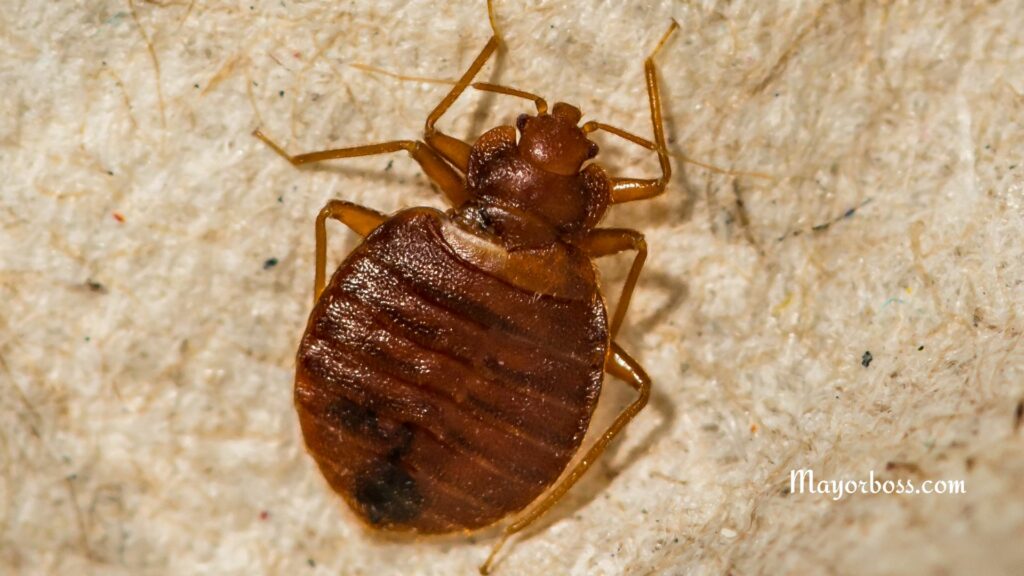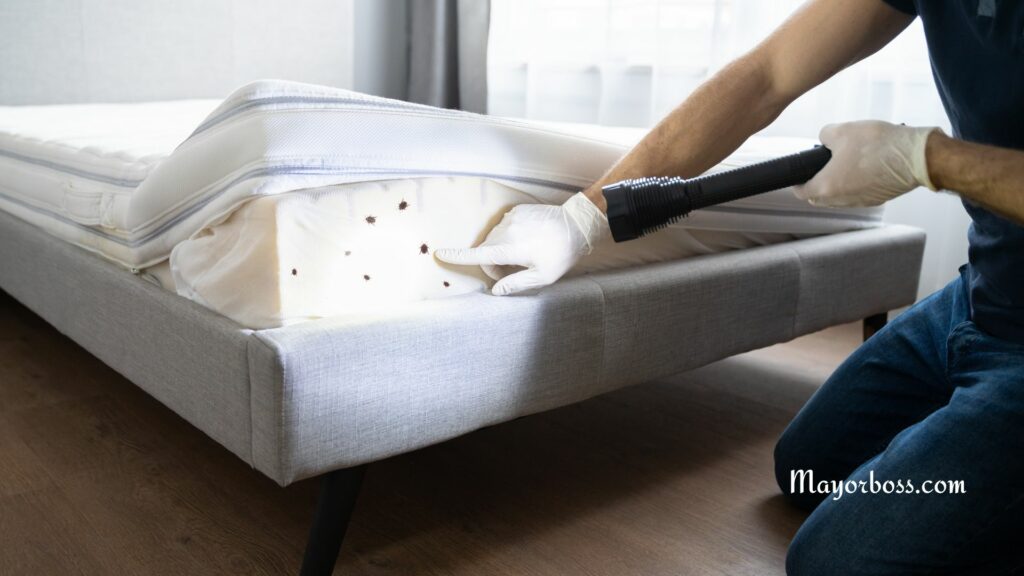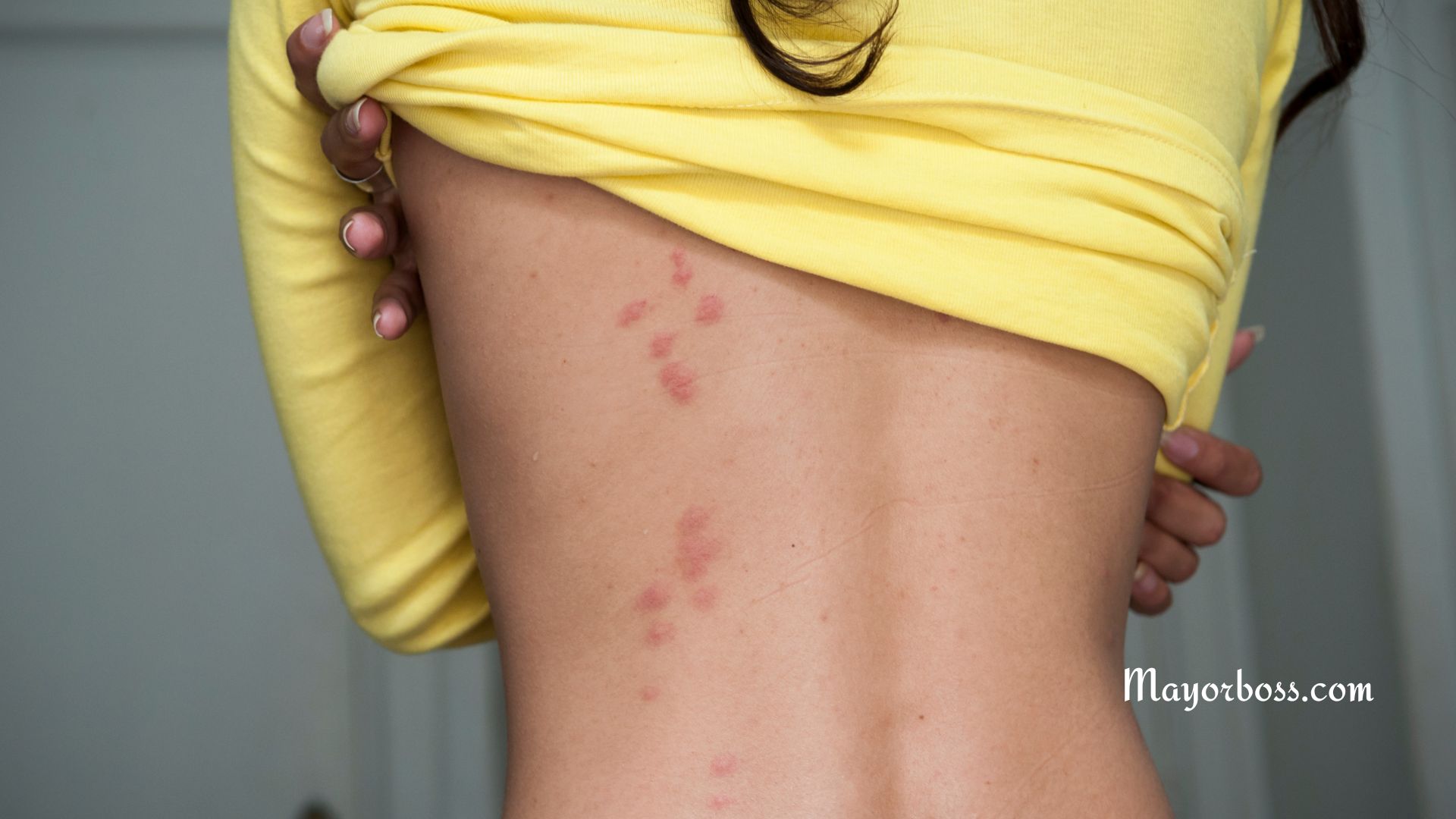Bed Bugs: How to Spot Them and Get Rid of Them
Dealing with bed bugs can often be a nightmare. These tiny, bloodsucking insects are notorious for infesting homes, disrupting sleep, and leaving behind irritating, itchy bites. But how can you be sure bed bugs are causing the problem, and more importantly, how can you effectively get rid of them? Scroll down to know everything.
What Are Bed Bugs and Where Do They Hide?

Bed bugs are small, flat insects, typically reddish-brown in color, that feed on the blood of humans and animals. The U.S. Environmental Protection Agency (EPA) describes them as about the size of an apple seed when fully grown. They don’t fly but can crawl rapidly, which makes it easy for them to spread from room to room. Bed bugs often hide between couch cushions, in cracks, crevices, and dark spaces, making them hard to spot.
Common hiding spots include:
- Mattresses and box springs
- Bed frames, headboards, and furniture seams
- Underneath wallpaper and wall hangings
- Inside electrical outlets and behind picture frames
- In luggage, clothing, and bedding

Signs That You May Have a Bed Bug Infestation
Bed bugs are sneaky and nocturnal, which means they typically come out to feed at night while you’re sleeping. However, there are several signs that may indicate their presence.
1. Unexplained Bites on Your Skin
Waking up with itchy, red bites on your skin could be an indication of bed bugs. According to the Centers for Disease Control and Prevention (CDC), bed bug bites usually appear as small, red, and often clustered or arranged in lines. However, these bites can be mistaken for other insect bites or skin conditions, so it’s important to look for additional signs.

2. Bloodstains on Your Sheets
Finding small blood stains on your mattress, sheets, pillowcases, or pajamas can be a sign of bed bugs. When they feed, they may leave behind tiny drops of blood. Additionally, if you unknowingly squash a bed bug while it’s feeding, it can leave a noticeable reddish smear.
3. Dark Spots on Your Mattress
One of the most telling signs of a bed bug infestation is the appearance of tiny dark spots on your mattress, box spring, or bed frame. These spots are bed bug feces, which look like small ink marks. If you notice these signs, inspect your bedding and nearby furniture closely.
4. Bed Bug Exoskeletons
Bed bugs molt as they grow, shedding their outer shells. If you find small, translucent shells in mattress seams, behind furniture, or in other hiding spots, you might be dealing with bed bugs.
5. Musty Odor
In severe infestations, bed bugs can produce a distinct musty or sweet odor. While not everyone notices this smell, it can serve as an additional clue to the presence of bed bugs.
Steps to Get Rid of Bed Bugs
If you suspect a bed bug infestation, you’ll want to act quickly to prevent them from spreading. Here’s how you can tackle the issue:
1. Thoroughly Inspect Your Living Space
Start by checking the most common hiding spots for bed bugs. Look at mattress seams, cracks in the bed frame, behind baseboards, under cushions, and even inside electrical outlets. A flashlight and a magnifying glass can help you spot these tiny insects. In fact, if you find any signs, consider removing and isolating affected items to contain the spread.
2. Wash and Heat-Treat Bedding
Pest experts recommend washing all bedding, linens, and clothing that could have come into contact with bed bugs. Use the hottest water temperature the fabric can handle, and then dry them on high heat. High temperatures can effectively exterminate bed bugs and their eggs.
3. Vacuum Regularly
Vacuuming can help remove bed bugs from mattresses, furniture, and carpets. Use a vacuum with a hose attachment to clean cracks, crevices, and seams where bed bugs might hide. After vacuuming, seal the vacuum bag in a plastic bag and quickly dispose of it outside the house.
4. Encase Your Mattress and Box Spring
Consider using bed bug-proof encasements for both your mattress and box spring. These covers specifically trap any remaining bed bugs inside, preventing them from feeding. This step helps starve the bugs over time, reducing the infestation.
5. Use Bed Bug Sprays and Powders
There are several bed bug sprays and powders available that can help eliminate bed bugs. The US EPA suggests using insecticides that are specifically labeled for bed bugs, such as pyrethrins and pyrethroids. However, these products should be used with caution, as some can be harmful to humans and pets. Always read and follow the product instructions carefully.
6. Call a Professional Exterminator
If your efforts don’t seem to be working or if the infestation is extensive, it’s best to contact a professional pest control service. Experts have access to powerful insecticides and heat treatments that can effectively eradicate bed bugs. Most exterminators recommend a combination of chemical treatments and heat treatments to fully eliminate the infestation.
Preventing Future Bed Bug Infestations
Once you’ve dealt with an infestation, you’ll want to take steps to prevent future problems. Here’s how to keep bed bugs at bay:
1. Inspect Secondhand Furniture and Clothing
If you bring used furniture or clothing into your home, inspect them for signs of bed bugs before use. Bed bugs can easily hitch a ride on fabric surfaces.
2. Use Protective Mattress Covers
Using bed bug-proof encasements for your mattress and box spring can prevent bed bugs from making a home in your bedding. These encasements create a barrier that is difficult for bed bugs to penetrate.
3. Be Cautious When Traveling
When staying in hotels or other accommodations, keep your luggage off the floor and inspect the bedding for signs of bed bugs. Upon returning home, immediately wash and heat-dry your clothes to kill any potential hitchhikers.
4. Declutter Your Living Space
Bed bugs love to hide in cluttered areas. By keeping your living space tidy and minimizing hiding spots, you make it harder for bed bugs to establish a home in your environment.
The Takeaway
Bed bugs can be a frustrating and stubborn problem to deal with, but by knowing how to spot them and taking swift action, you can effectively get rid of them. While DIY methods can work in some cases, a persistent infestation may require the help of a professional exterminator. Keep in mind to maintain vigilance and follow preventive measures to keep your home bed bug-free. If you suspect an infestation, it’s best to act promptly to stop these bed bugs in their tracks.
